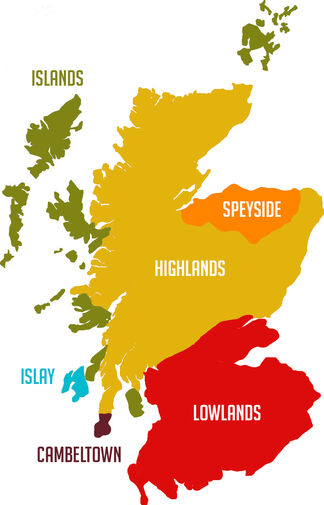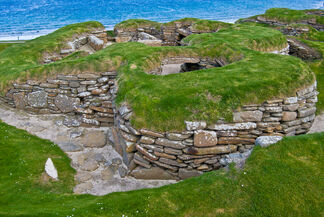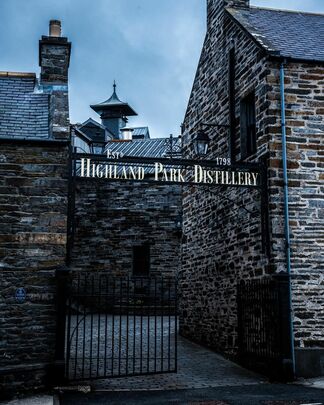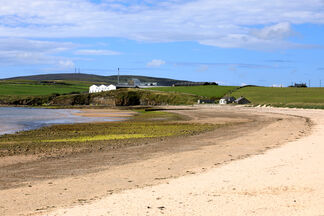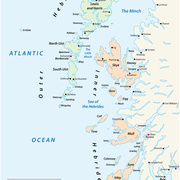The Islands Whisky Region Part 1
The Orkney Islands
I was sitting in my Whisky Hut over the weekend with a neighbour of mine. We sampled some Springbank whisky from Campbeltown (my last Blog entry was about this wonderful town). We got talking about the other Whisky regions in Scotland and how they faired during the ups and downs of the industry and world economy. It seems to me that the region most affected has been the Islands region – a region that is probably least known, and least recognised. It is in fact, often bundled together with the Highland region which seems a tad unfair due to the already colossal size and distillery population of the Highlands. And also considering that some of these islands are over 60 miles from the mainland!
Highland Park is the oldest still active distillery, dating back to 1798 when it was operated by an illicit distiller and smuggler,
About the Island Region
The Main Six Islands Producing Whisky
The Islands around Scotland – over 800 of them - all represented a real opportunity for distillers in the days of illegal whisky production. With easy access to local materials and water and ports for smuggling out the finished product. Many of the islands have vast reserves of peat for malting the barley. And to be fair, given the remoteness and climate of many of these islands, whisky would really help keep out the cold, and would deter a visit from the Customs folks!
Perhaps unsurprisingly given their disparate locations all around the West and North East of Scotland, the whiskies produced on The Islands are highly varied in flavours with the only unifying factor being that they are generally smoky and peaty, with a briny note that echoes their coastal locations. But even that is a generalisation and there are many surprises. Another characteristic of Islands Whisky is a slight saltiness. This comes from the process of the angels taking their share which is then replaced in the cask by local air. Sea air brings salt and in certain Islands Whiskies it is really noticable - and pleasant!
Personally, I subscribe to the six region categorisation of Scottish Whisky; Highlands, Lowlands, Speyside, Campbeltown, Islay and Islands. There are over 800 islands around the mainland of Scotland and at some time or other, whisky would probably have been produced on almost all of them. Within the Islands Region, there are 6 main whisky producing islands; Arran, Jura, Skye, Orkneys, Harris and Mull. But as an introduction in this entry, I am going to talk about one of these Islands; Orkney. We will get to the others over the coming weeks.
The Orkney Islands
At the Northern Tip of Scotland
Orkney is actually not a single island, but an archipelago of some 70 islands. It sits at the most northern part of Scotland. Despite its remote location in the icy North Atlantic, Orkney has been inhabited for thousands of years. 5000 year old Neolithic sites dot the main island along with 12th century Viking tombs and carvings. Fisherman, traders, explorers and great Naval Armies have also made their way through the storm-tossed waters.
One of the main attractions of interest on Orkney is Skara Brae, which was discovered in 1850 when a fierce storm blew away the sand that had covered it for centuries. It is a settlement comprised of streets and houses with walls and furnishings that were made by humans 5000 years ago. Skara Brae was occupied for more than 600 years, longer than many cities we have today.
Early in the 9th Century, when Viking longboats were leaving the shores of Denmark and Norway in search of new lands to conquer, they came upon Orkney. And so these Islands were swept up into the vast Viking kingdom and ruled by a succession of Viking earls from around 800AD until 1468.
In 1474 Orkney became part of Scotland, after King Christian I of Norway (plus Denmark and Sweden) pledged Orkney and Shetland against payment of his daughter’s dowry when she married King James III of Scotland. He failed to pay so both groups of islands were annexed to Scotland.
Orkney is the most northerly of Scotland's whisky-producing regions. Only two distilleries are located in the islands; they produce whiskies that are full bodied and balanced, with smoky, salty characters. Although a third distillery is now under construction. Highland Park and Scapa are the two distilleries producing whisky today. And Deerness is in the process of starting up production very soon.
Orkney is home to just over 21.000 people. People born and raised there are called Orcadians.
Highland Park Distillery
The Most Northern Distillery in Scotland
Of the current active distilleries, Highland Park is the oldest, dating back to 1798 operated by an illicit distiller and smuggler, Magnus Eunson, a colourful character who also worked as a butcher and church officer. The reality is that the distillery was active long before that year, but it was its official founding date as that’s when Eunson got caught by the authorities and was forced to start paying taxes!
Highland Park Distillery is Scotland’s most northerly (previously also the most northerly in the world), being almost inside the Arctic circle. It is actually closer to Oslo than it is to London! Highland Park is very proud of its Viking roots with many of its whiskies taking on Viking names or themes. Its single malts are amongst the most popular and acclaimed, regularly drawing high prices at auctions.
Unusual among Scottish distileries, Highland Park malts its own barley.
Highland Park is one of just a handful of distilleries in Scotland that malts its own barley. They are incredibly proud of their local source of peat from Hobbister Moor, just 7 miles from the distillery. It is over 9000 years old in places and up to 4 meters deep – so plenty around to keep the distillery going! Peat here is very different to peat found on Islay where most whiskies are extremely peaty. Peat on Orkney results in a much milder peat taste so those of you not enamoured to Ardbeg or Laphroaig, I recommend you try a dram of Highland Park!
They have a core range of whiskies ranging from 10 years old all the way up to 50 years old. They also produce some incredible limited bottlings from selected casks – these are all given mystical or Viking names, such as Valkyrie, and Valknut.
Scapa Distillery
Unjustly In The Shadow of Highland Park
Scapa distillery is a on the mainland of Orkney, on the shore of Scapa Flow near the town of Kirkwall. Scapa is the second-northernmost whisky distillery in Scotland, half a mile (800 metres) south of the Highland Park Distillery. Scapa seems to be "in the shadows" of Highland Park but the high quality of its whisky makes this quite unfair.
The distillery was founded in 1885 by Macfarlane & Townsend, a Glasgow blender. It was almost destroyed by fire in 1919 but was saved by nearby sailors of the remaining Grand Fleet forming a human chain carrying buckets of sea water to extinguish the fire.
In 1994 the distillery was mothballed, with limited production being occasionally carried out from 1997 by nearby staff from Highland Park distillery. It was close to complete closure until a £2.1 million refurbishment changed its fortunes. In 2005, ownership passed to Pernod Ricard and full production recommenced in October 2005.
Scapa whisky is a fairly limited and focused range. Compared to it’s neighbour, Scapa whisky is a smooth and honeyed single malt whisky. Their core whisky is called Skiren, and they also release some distillery specials which can attract good prices at auction.
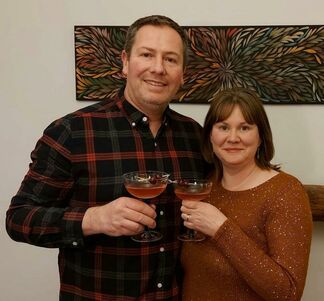
Deerness Distillery
A Third Orkney Distillery In the Making
Also in Orkney is Deerness Distillery, who produce multi-award winning gin, vodka and coffee liqueur. Currently in the process of expanding, they aim to produce a mainstream whisky but also to use locally grown barley, which will be malted, distilled and casked on site. Deerness’s famers are keen to help and the distillery will be one of only about a dozen in the UK who produce a “grain to glass” whisky. The plans have all been delayed by the pandemic but Adelle’s personal ambition is to create a whisky, especially for ladies, that appeals to women’s sense of taste and smell and of course, looks fabulous! I look forward to it!
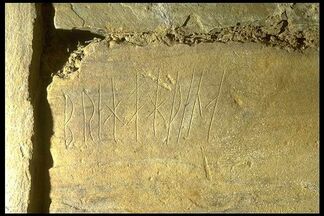
Viking Graffiti
And You Thought Graffiti Is Recent!
The ancient tomb of Maeshowe was built on Orkney around 5000 years ago and is the namesake of these types of chambered cairns found around Orkney. It just looks like a grassy hill from the outside, but inside is a main chamber and three smaller chambers, made with precision. Somewhat similar to the Egyptian burial chambers.
However, what is probably one of the most interesting parts of Maeshowe arrived much later. In the 12th century, Viking explorers broke into the cairn and carved graffiti in runes around the walls. Yes, actual graffiti that says things like “Ofram the son of Sigurd carved these runes”. There are also clues as to when the men were there, with mention of Ragnar Lothbrok. If you have seen the UK TV series, Vikings, you will know who this fellow is!
